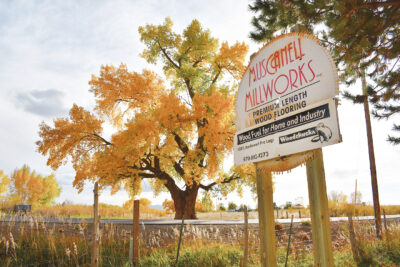As we headed into fall, sellers were able to offer more products due to increased sawmill production. The slight slowdown in home construction and good drying conditions over the summer helped improve overall availability. In the U.S., housing completion fell in August (the most recent data available for this report), thus affecting Hardwood finished goods demand. But it was noted that new home completions were 9.5 percent higher this year through August than in 2020. Demand continues for Hard Maple, and so sawmills are focusing on this species, which is resulting in high prices. Production is meeting customers’ needs for the majority of grades and thicknesses for Hard Maple. With the price difference between Hard and Soft Maple, some end users switched to Soft Maple. Red and White Oak are reported as mixed, and with improved drying conditions, the availability of these species has also improved. Some contacts noted they would like to add to their inventories for these species.
With the U.S. Thanksgiving holiday behind us, and heading into the Christmas season, businesses are focusing on moving ahead, and are cautiously optimistic that the fourth wave of the pandemic will subside, and that economic conditions and business will improve for 2022.
Ash production was not high this year due to mills processing the much-in-demand Maple. The Emerald Ash Borer also affected Ash availability and thus production of this species. Production of green lumber supplies were readily being absorbed. Heading into late fall and early winter with the rainy season and hunting season, some contacts were concerned with the availability of this species. Contacts stated kiln-dried Ash markets were solid, with thin inventories for most grades and thicknesses.
Traditional and non-traditional customers are looking for Basswood as production has been controlled for some time. Contacts note kiln-dried inventories are low for some items with prices responding accordingly. Sawmills are producing output with marginally sufficient supplies to satisfy demand and prices are holding firm.
Sawmillers stated their supplies of Hard Maple are good or declining as the steady demand for this species continues to be favored by consumers. Sawmills and wholesalers are selling total green Hard Maple production with prices firm for most grades and thicknesses. Some contacts commented supplies are sufficient for near-term needs only. Secondary manufacturers stocked up their supplies and are now more cautious with purchases. It was noted there existed a steadier pricing environment at the time of this writing.
With the price difference between Hard and Soft Maple, many end users are looking for more volumes of Soft Maple. As such, there is not enough kiln-dried stocks to meet current demand in certain areas contacted.
Consumer demand continues to be strong for finished Hardwood products such as furniture, wood flooring, cabinets, millwork and mouldings. This is good news for Birch, as it is one of the more popular species with consumers. Some contacts noted that demand for green stocks is exceeding availability at the moment.
Production of Red Oak is not high because demand for this species has not been as good as last year’s nor at the beginning of this year. Prices are reported as softer, and kiln-dried Red Oak business has also weakened. Contacts noted they have adequate supplies. Export sales are not robust and highly price sensitive.
In the ManpowerGroup’s most recent Employment Outlook Survey, on hiring intentions of over 1,000 employers surveyed across Canada, revealed that 50 percent of employers surveyed planned to increase their staffing levels in the fourth quarter of 2021. And this, even with the added challenge of filling roles within a talent shortage.
Darlene Minatel, Country Manager of ManpowerGroup Canada, said, “With the majority of employers reporting some difficulty hiring due to talent shortages, we are seeing a new level of amenability towards job flexibility and a strong commitment to technical and soft skills training. Understanding what workers want and providing a culture of learnability are key to filling the talent gap.”
The survey revealed that 50 percent plan to increase their staffing levels in the fourth quarter of 2021, 11 percent anticipate cutbacks, 35 percent expect current staffing levels to remain unchanged, while the remaining 4 percent are unsure of their hiring intentions.
59 percent of employers reported having some difficulty filling jobs due to a lack of skilled talent. In response, employers are offering a mix of incentives to fill talent shortages: 41 percent reported more flexible work schedules; 40 percent reported training, skills development or mentoring; 32 percent increased wages; 32 percent more flexible working locations; 20 percent more non-financial benefits such as vacation; 19 percent incentives such as joining bonuses; and 19 percent lower job skills or experience requirements.
Nationwide, employers in all nine industry sectors expect to add staff in 4Q 2021.








